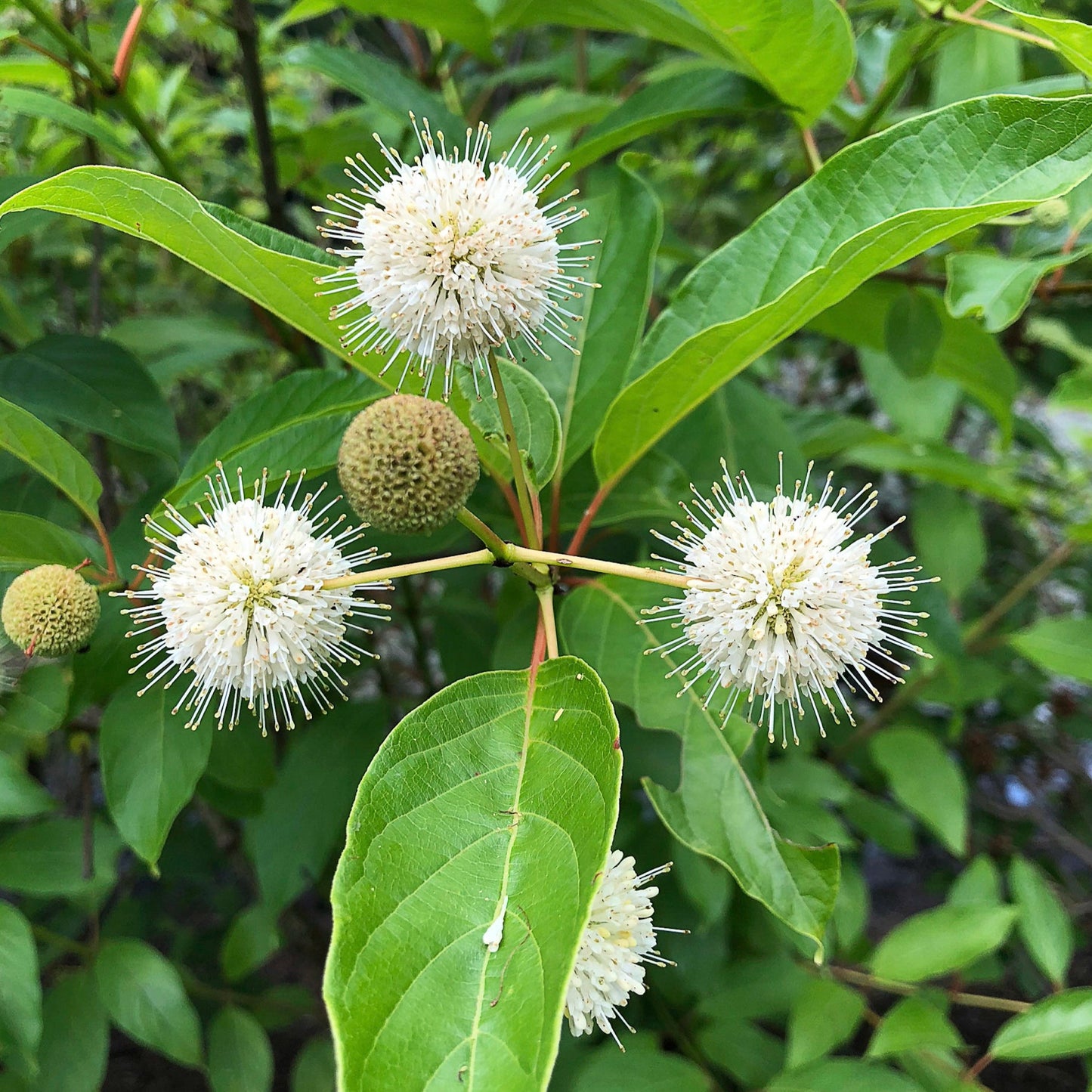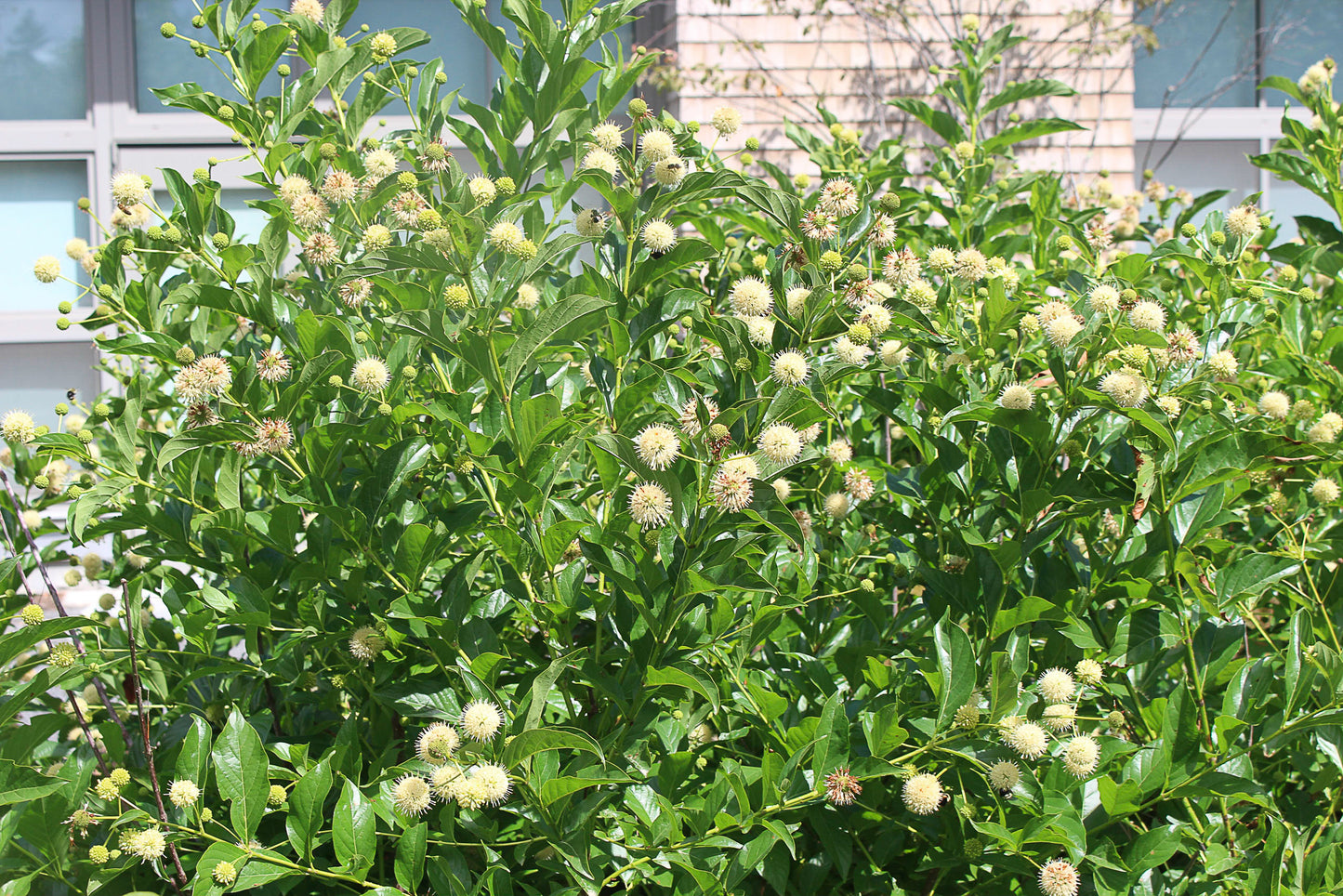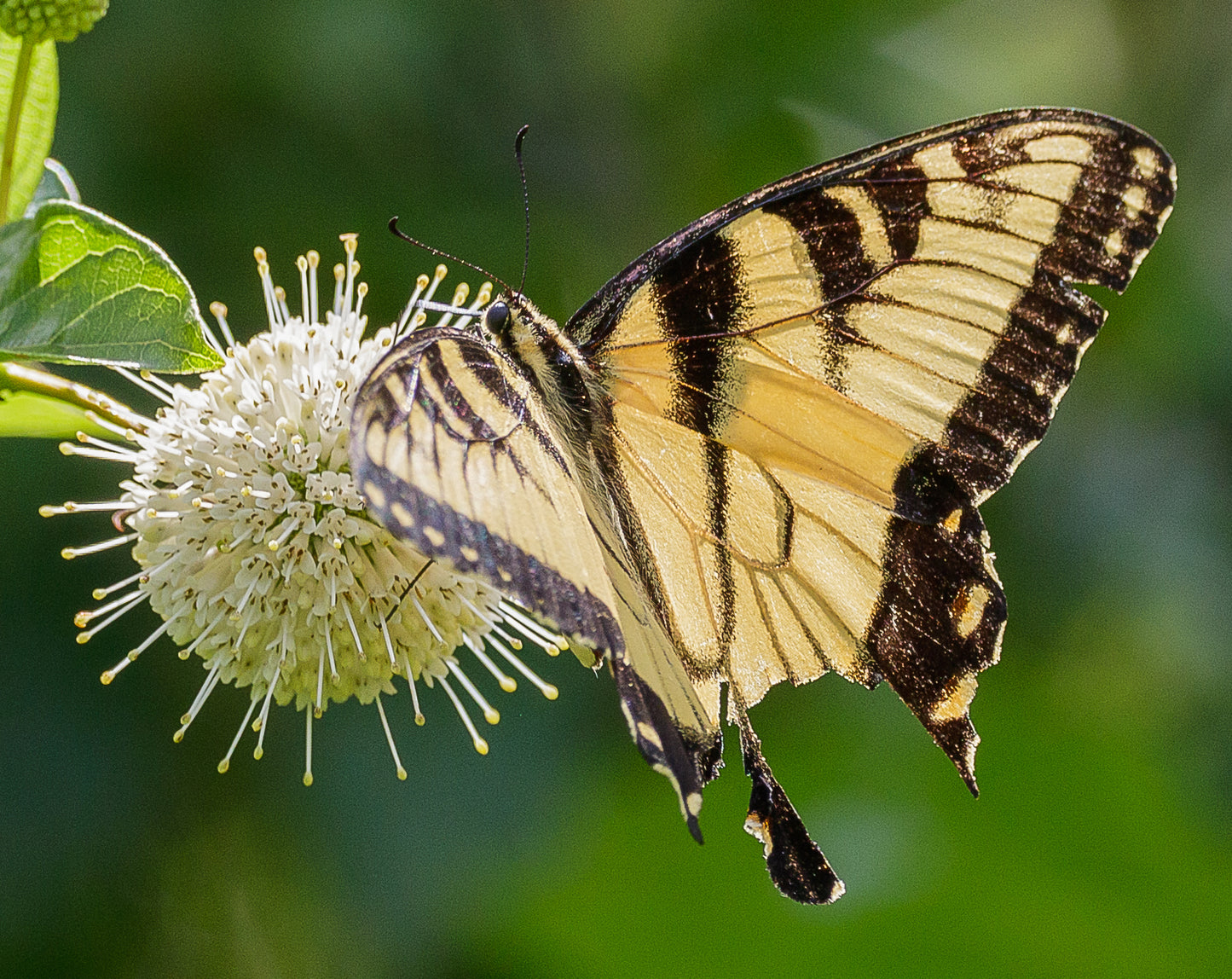Buttonbush (Cephalanthus occidentalis) Plant
Buttonbush (Cephalanthus occidentalis) Plant
This showy shrub is visited by many different species. The name of this shrub comes from the interesting flowers, which are arranged in small spheres with protruding anthers. Its tiny white flowers bloom all summer and are attractive to many different bee and butterfly species, including the swallowtail butterfly. Fruiting heads appear throughout the winter and are consumed by many waterfowl and shorebirds. Although the flowers and seeds are consumed, the foliage is poisonous to livestock and other animals.
Native to: Most of the lower 48 states except the Pacific Northwest region and some western states
Growing conditions: Requires full sun to partial shade, and medium to wet soils
Natural habitat: Often found in thickets, low woods, swamps, and stream margins, where older shrubs will have many branches and twisted trunks. Can tolerate flood conditions and shallow standing water for short periods of time. It does not do well in dry soils.
Grows up to: 12' tall and 8' wide
Blooms: June, July & August
Pairs well with: American hazelnut, American spikenard and Shrubby St. John's wort





